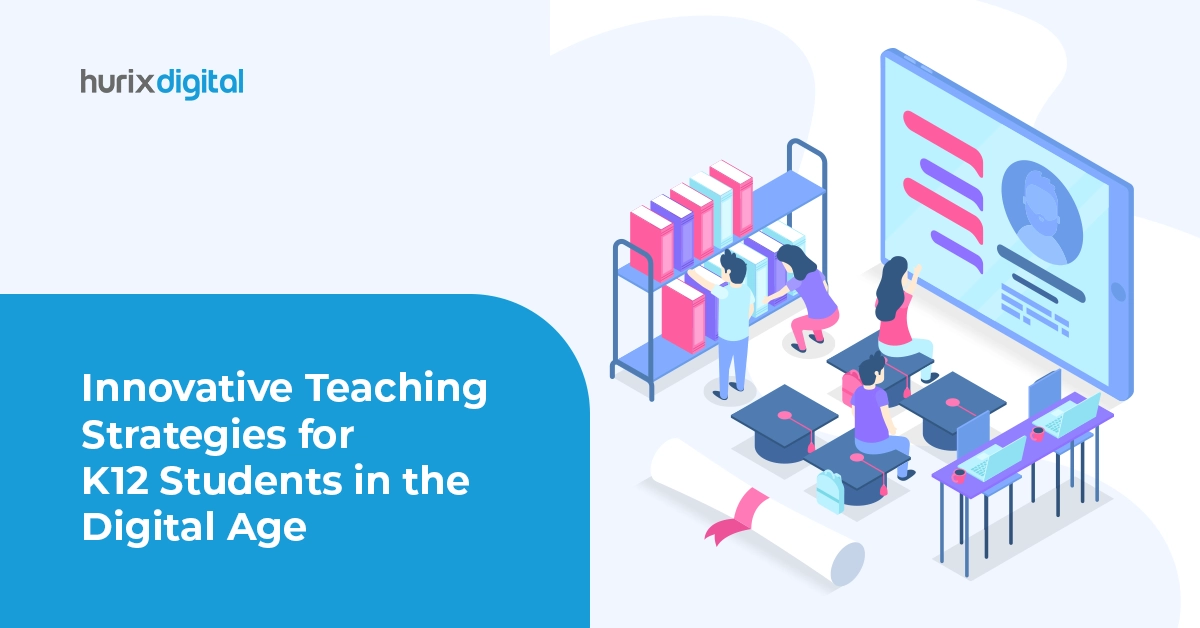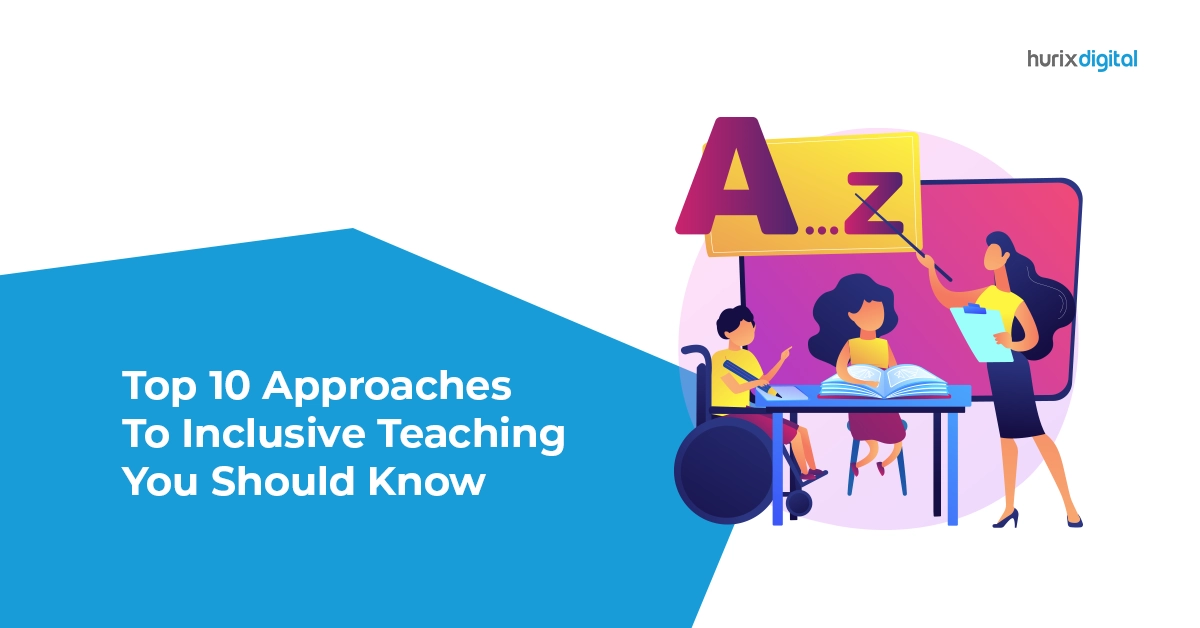Summary
This article has provided you with a comprehensive overview of EdTech integration and its impact on K12 education. It also explored various technologies that can be used to enhance the learning experience.
Integrating technology with various industries has become a norm, and education is no exception. It has brought about a paradigm shift, ushering K12 education into a new era of holistic, personalized, and student-centric learning experiences.
Leveraging various new-age technologies and EdTech integration as part of active learning strategies enhances metacognitive, emotional, and social competencies.
With hybrid learning models becoming more mainstream, adopting creative teaching methods has become the need of the hour. If you are brainstorming innovative and tech-driven teaching strategies, stay tuned!
As we move further, you will see how EdTech integration is transforming K12 education and also explore technologies that make modern classrooms smarter and more accessible.
Table of Contents:
- What is EdTech?
- Why is EdTech Integration Crucial?
- Impact of Digital Age Learning on K12 Education
- How Do You Leverage EdTech for K12 Education?
- Hurix Digital: We Can Help You Make K12 Education Engaging
What is EdTech?
EdTech is an abbreviation of two words: Education and Technology. This form of technology refers to tools – software, and firmware – that facilitate interactive classrooms and digital-age learning. From Zoom classes to apps like Duolingo, everything falls under the umbrella term of EdTech.
Why is EdTech Integration Crucial?
With technologies becoming advanced and more intuitive, EdTech as an industry is witnessing exponential momentum. In 2023, the EdTech sector was valued at 162.89 billion USD and is expected to grow to $304.63 billion in 2027 at a CAGR of 16.9%.
Also, digital-age learning in K12 schools has increased by 99% since 2020, and there’s no sign of slowing down.
Now, the question is: why educators across the world are increasingly adopting smart technology in the education field?
Let’s see:
The rapidly evolving technological landscape has revolutionized traditional classrooms and reshaped the fundamentals of K12 education. Leveraging various technologies has taken the learning environment to a whole new dimension, creating an immersive experience.
State-of-the-art digital tools like AR can enable teachers to simplify complex concepts and explain them most engagingly and interestingly. Moreover, with such active learning strategies, EdTech promotes a mindset that promotes analytical thinking, critical questioning, and experimentation. This enables the students to grasp the subject better and faster.
Modern classroom techniques becoming popular have significantly impacted K12 education. Want to know how? Keep Reading!
Also Read: Boosting Student Engagement on K12 eLearning Platforms: Tips and Tricks for Measuring Success
Impact of Digital Age Learning on K12 Education
Digital-age learning has a profound impact on K12 learning models. It has not only made learning more personalized but also helped students develop cognitive and emotional skills.
Let’s check out how modern classroom techniques have transformed the educational landscape:
1. Personalized Teaching
The cookie-cutter approach doesn’t work when it comes to education. Harnessing technologies allow you to bridge the gaps in pedagogy and cater to each student’s learning capabilities and limitations.
For example, students can simulate how gravity works on various planets and celestial bodies using immersive VR technology. The simulation helps them to understand the nuances of a complicated physics concept.
2. Better Engagement
Gone are the days when teaching was a one-way process where the instructor did all the talking, and students stared at blackboards. Today, with EdTech integration, the educational landscape has become more engaging.
Take gamification in the classroom, for instance. Teachers can design games or quizzes where students can apply theoretical learning in a real-world context. Furthermore, gamification enables teachers to get instant feedback, allowing them to identify potential areas of improvement.
3. Data-driven Education Strategies
Within a traditional learning model, all students – irrespective of their interests – are imparted the same information. However, with EdTech integration, teachers can use data-driven insights to make learning more adaptive and personalized.
Educators can harness the power of data to identify the strengths and limitations of the students and create student-centric education.
How Do You Leverage EdTech For Innovative K12 Teaching Methods?
Using technology in education not only increases student engagement but also promotes reasoning, creativity, and critical thinking.
But, the question is how to harness new-age digital age learning to make K12 education more productive and engaging. Read on as we discuss how technology makes modern-day classrooms smarter:
1. Harness the Power of Artificial Intelligence
We all remember how ChatGPT got flak in the initial days as students used it to write their assignments! While this is true, Artificial Intelligence is much more than that!
Various AI tools can help teachers identify discrepancies within the existing teaching models, along with suggesting new learning avenues.
Moreover, advanced AI algorithms can identify students’ progress and facilitate the teachers to tailor their lessons. For example, new-generation textbook apps can analyze the studying patterns of students and provide immersive learning experiences, right from quizzes to contextual guidance.
2. Data Analytics Predictive Learning
Multiple digital touchpoints, such as education ERPs or learning management systems, gather tons of data, such as teaching patterns and studying habits. Manually analyzing such massive information can be daunting. Also, this data can help teachers, mentors, and educational institutes to create personalized pedagogy.
Let’s understand this with a use case: with data analytics, teachers can identify students who might drop out. Using insights into learning behavior can allow the mentors to intervene early and help students continue their studies.
3. Leveraging the Internet of Things
Right from maintaining campus attendance to enhancing in-class productivity, the Internet of Things has emerged as a game-changer in education. This technology enables educational institutes to create real-time communication and collaboration between students and teachers.
So, how does IoT help you create active learning strategies?
With a connected platform, teachers can share learning materials with the students and monitor their progress in real-time. Moreover, using IoT technology enables gamification in the classroom and immersive stimulation making it easier for students to grasp the nuances of a concept.
Also Read: Elevate Education By Amalgamating K12 Learning Outdoors
Hurix Digital: We Can Help You Make K12 Education Engaging
A traditional approach to curriculum planning and pedagogy cannot match the pace of the rapidly evolving K12 education industry. Adopting the digital age learning model is crucial to boosting learning motivation, engaging K12 students, and enabling critical thinking skills.
If you are looking for top-notch K12 education content, contact Hurix Digital. We have 2 decades of extensive experience in delivering innovative solutions. Want to know more? Schedule a call with us.








